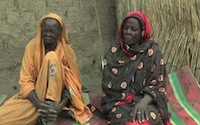Tapiete belongs to the well-studied and documented Tupi-Guarani linguistic family. Rodrigues (1984/85) identifies seven groups of languages that form part of the Tupi-Guarani linguistic family. According to this author, the Tapiete belongs to the first one of these groups together with Old Guarana, Mbya, Xeta , Ñandeva (Chiripa), Caiwa, Paraguayan Guarani, Guayaki, and Chiriguano.
The origin of the Tapiete people has been subject to debate. Two hypotheses have been presented. The first one suggests that the Tapiete are Guarani that, after having separated from the original group, kept their language, and acquired the customs of their neighbors, especially Toba Indians (Cardus 1986 in Schmidt 1938). The second hypothesis suggests that the Tapiete Indians are a tribe from the Chaco region which speaks a Tupi-Guarani language. More specifically, they were ‘chiriguanized’ by the Ava-Guarani (commonly known by the term ‘chiriguanos’). On the linguistic level, this suggestion implies that the Tapiete language is the result of the adoption of a Guarani language (i.e. the Ava-Guarani language) by a Chaco indigenous group (Rodrigues 1984/85:42) This last hypothesis has been rejected by the Tapiete themselves.
In terms of typological characteristics, Tapiete is an active/inactive language whose order of constituents is SOV. Tapiete exhibits prefixation, suffixation and partial reduplication. Prefixes encode modality, person markers and causation (morphological causative mb+- ~ m+-). Suffixes encode causation (morphological causative -ka), tense, aspect, and derivational changes.
An interesting morphological feature that differentiates Tapiete from other Tupi-Guarani languages is the alternation a- ~ ai- as a marker of the first person singular. In Tupi-Guarani languages this alternation does not have any functional load while in Tapiete the ai- prefix seems to be related to the expression of middle voice (e.g. a-mank+ ‘I wet something’ vs ai-mank+ ‘I wet myself’).
References
Arce Birbeuth, Eddy (2003). Estrategias de sobrevivencia entre los tapiete del Gran Chaco. La Paz: PIEB.
Carvajal, Silvia (1998). Etnohistoria y ocupación espacial del pueblo tapiete. Anales de la Reunión Anual de Etnología 1: 363-385. La Paz: MUSEF.
Dietrich, Wolf (1986). El Idioma Chiriguano. Gramática, textos y vocabulario. Madrid: Ediciones Cultura Hispánica. Instituto de Cooperación Iberoamericana.
Gutiérrez, Ramiro (1995). Etnografía chaqueña: el caso de los tapietes del Pilcomayo. Revista del MUSEF 6: 74-106.
Jensen, Cheryl (1990). Cross-referencing changes in some Tupí-Guaraní languages. En Doris L. Payne (ed.) Amazonian linguistics. Studies in lowland South American languages. Austin: University of Texas Press.
Métraux, Alfred (1946). Ethnography of the Gran Chaco. En Steward, J. (ed.) Handbook of South American Indians. The Marginal Tribes. 1:197-380.Washington: Smithsonian Institution, Bureau of American Ethnology.
Nordenskjöld, Erland (1910). Sind die Tapiete ein guaranisierter Chacostamm? Globus. 98: 181-186.
Rodrigues, Aryon, D.(1984/1985). Relações internas na família lingüística Tupi-Guarani Revista de Antropologia. Separata dos Volumes 27-28. Universidade de São Paulo. Faculdade de Filosofia, Letras e Ciencias Humanas. Departamento de Ciências Sociais (Área de Antropologia).
Schmidt, Max (1938). Los Tapietés. Revista de la Sociedad Científica del Paraguay. 4(2): 36-67.








